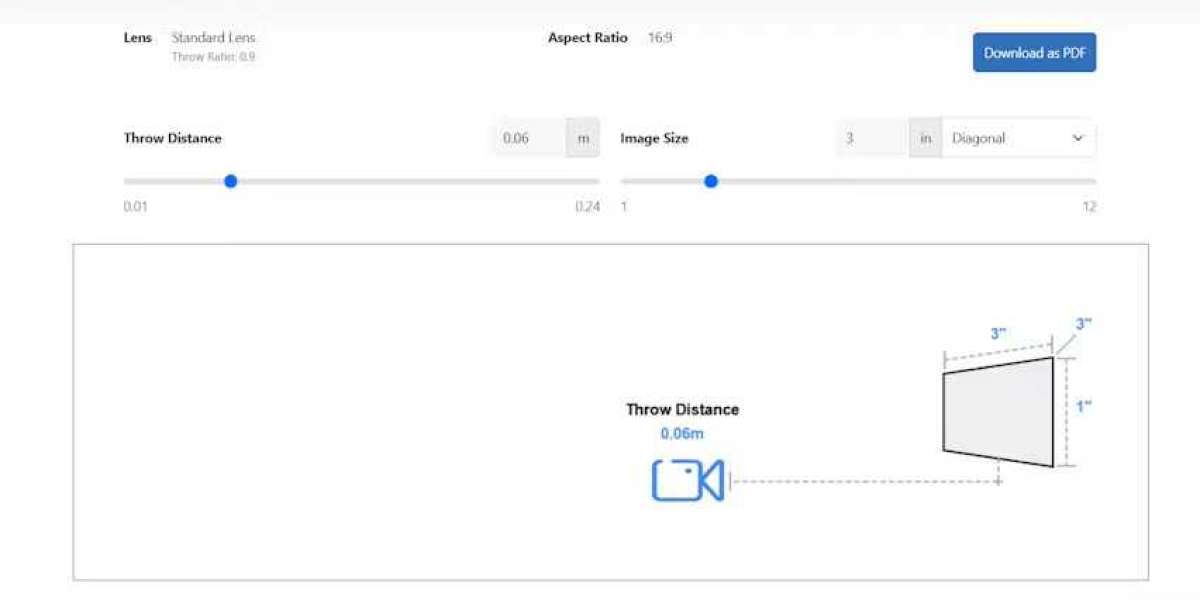In modern environments, display technology plays a critical role in communication, collaboration, and engagement. Whether in corporate offices, schools, auditoriums, or retail spaces, the ability to scale display solutions as needs evolve is becoming increasingly important. Scalability determines how easily your display setup can grow, adapt, and support future expansion without requiring a complete overhaul.
Two of the most common large format display options are projectors and video walls. Each offers unique benefits and challenges when it comes to scaling. In this blog, we will explore the scalability of both projectors and video walls, discuss real world applications, and provide insights to help you choose the right solution for your growing needs. We will also touch on the comparison of Video Wall vs Projector to provide broader context.
Understanding Scalability in Display Solutions
Scalability refers to the ability of a system to grow or adapt without losing performance or requiring major redesign. For display technologies, this includes:
Expanding screen size or coverage area
Adding more display units or modules
Supporting higher resolutions or new content formats
Integrating new technologies seamlessly
Maintaining performance and visual quality as the system grows
Choosing a scalable display solution can save time, money, and resources in the long run.
Projector Scalability
Projectors offer a simple and flexible way to create large images. By adjusting projection distance and lens settings, you can change screen size without adding more display units. This makes projectors an attractive option for spaces that may need to expand their display area over time.
1. Easy Size Adjustment
Projectors allow quick screen size adjustments by moving the unit or changing lens zoom settings. This is particularly useful for classrooms, auditoriums, and meeting rooms where display size requirements may vary for different events or audiences.
2. Multiple Projector Setups
For larger spaces or ultra wide screens, multiple projectors can be blended together using edge blending techniques to create a single seamless image. This allows organizations to scale up their display area without replacing existing equipment.
3. Flexible Placement
Projectors can be mounted on ceilings, walls, or placed on stands, allowing scalable installations without major structural changes.
4. Content Adaptability
Projectors support various content formats and resolutions, making it easy to upgrade to higher quality sources without replacing the display itself.
Limitations of Projector Scalability
While projectors are scalable in size and placement, there are practical limits. Brightness may need to be increased for larger images, requiring more powerful units. Edge blending for multiple projectors requires precise calibration, and as systems grow more complex, managing them can become challenging. Additionally, ambient light control becomes more critical with larger projections.
Video Wall Scalability
Video walls are built using multiple LED or LCD panels arranged in a grid to create one large display. Their modular nature makes them inherently scalable. You can start with a small number of panels and expand by adding more as needs grow.
1. Modular Design
Video walls can be expanded both horizontally and vertically by simply adding more panels. This makes them ideal for organizations expecting growth or changing spatial requirements.
2. Seamless Expansion
Modern LED video walls offer near seamless edges, allowing smooth expansion without compromising visual continuity.
3. High Brightness and Clarity
As the video wall grows, brightness and resolution remain consistent because each panel has its own light source. This ensures excellent visual quality regardless of size.
4. Durability and Longevity
LED panels have long operational lifespans, making video walls a reliable long term investment that can scale without frequent replacements.
Limitations of Video Wall Scalability
Expanding a video wall requires careful planning to maintain structural integrity, alignment, and visual uniformity. It also involves higher upfront costs, as additional panels and mounting systems are needed. Power consumption grows with each added panel, and larger video walls may need enhanced cooling systems.
Video Wall vs Projector Scalability Comparison
Size Flexibility
Projectors allow quick screen size adjustments by repositioning, making them easy to scale for temporary needs. Video walls require physical expansion by adding panels, which is more permanent but structured.Modular Growth
Video walls excel at structured, step by step expansion, while projectors are better for flexible size changes without adding hardware.Resolution and Quality
Video walls maintain resolution as they grow because each panel adds pixels. Projectors may lose image brightness or sharpness when scaled to very large sizes without upgrading the unit.Cost Considerations
Projectors offer lower initial costs and easier scalability in small to medium spaces. Video walls involve higher costs but provide a more durable and visually uniform solution for large scale expansion.Maintenance and Management
Projector systems with multiple units require alignment and calibration. Video walls need maintenance for multiple panels but are easier to manage once set up.
Real World Scenarios
Classrooms and Training Rooms
Projectors are ideal for spaces where display sizes need to vary for different groups or sessions. Adding another projector for special events is easy and cost effective.Corporate Lobbies and Control Rooms
Video walls shine in environments that need structured expansion and continuous operation. Adding panels as the company grows maintains a professional, uniform display.Event Spaces and Auditoriums
Projectors offer quick adaptability for various event formats, while video walls provide long term scalability for permanent installations.
Choosing the Right Scalable Solution
Your choice between projectors and video walls should be based on how you plan to grow and use your display system.
Choose projectors if:
You need flexible screen sizes that can change frequently
Your expansion involves occasional larger displays rather than permanent growth
You want a cost effective solution for small to medium spaces
Choose video walls if:
You expect consistent, structured expansion over time
You need a permanent, professional quality display with uniform brightness
You have the budget for higher initial investment and long term scalability
Conclusion
Scalability is crucial for future proofing your AV investment. Projectors provide flexible, adaptable scalability that suits classrooms, training rooms, and multi use spaces. Video walls offer structured, modular scalability for large, permanent installations that need consistent performance and a professional look.
Professional AV solutions like XTEN-AV can help you evaluate your current setup, future plans, and budget to determine the most scalable display solution. By understanding the strengths of both technologies in the context of Video Wall vs Projector, you can make an informed choice that grows with your needs while maintaining visual excellence and cost effectiveness.
Read more: https://ivebo.co.uk/read-blog/180216








